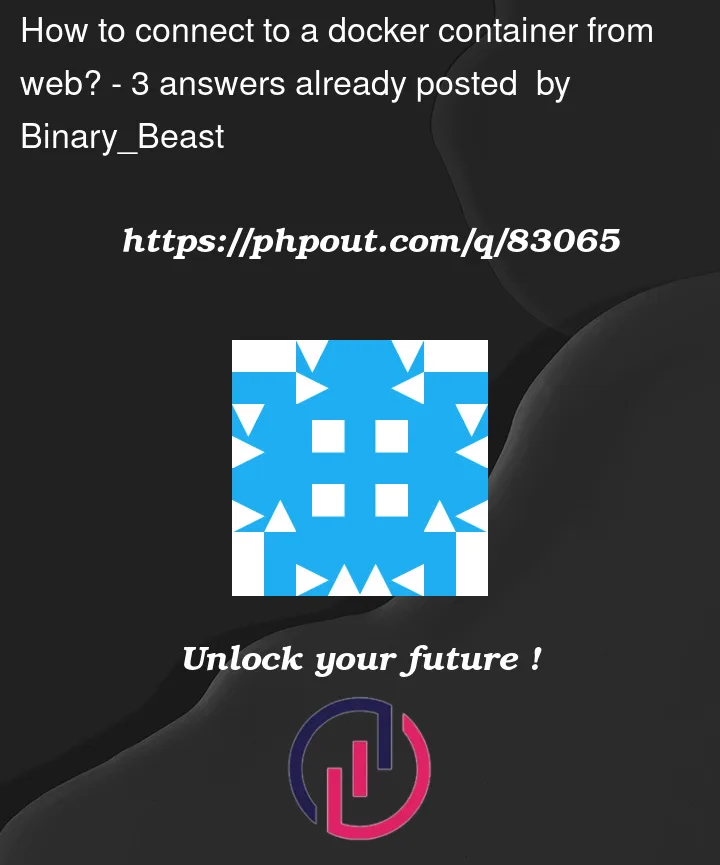I am working on a new project where I need to connect to a docker container from web?
By connect I mean I will create a shell in the website and tat shell will be able to connect to the running container.
I am not able to figure out how to proceed with the project.
Can anyone help me out?




3
Answers
From what I know there is no out of the box solution, you should make your own api executing command on your container running
docker exec <id> <command>and returning the output, mind escape the command.However you should know that letting a user run commands inside a docker is dangerous as it could impact your host.
You should be able to use Docker APIs for this (https://docs.docker.com/engine/api/) along with a framework that wraps the APIs. For example refer dockerode.
You could combine some JavaScript modules. node-pty and xterm being the most important. Additionally, ws is useful, but could be replaced but something else.
Note: this is not a production ready example. In particular, you should take care of safety measurements, or better yet, let no one but yourself use it.
server.js
index.html
Note: I am using the statics from the node modules folder, in your real code you probably want to use a bundler for this.
I am serving the entire project with nginx on port 8080 for simplicity. And then I start the server with node.
Afterwards, I can open http://localhost:8080 in my browser, and get a shell.
The dependencies in my package.json are these:
You can view the code in this repo: https://github.com/bluebrown/web-shell.